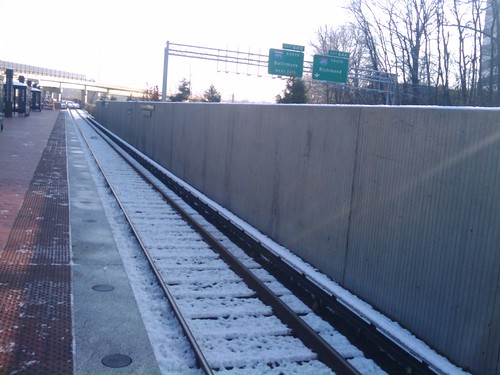 After witnessing last Friday's traffic jams, one wonders if maybe the I-66 corridor needs more contingency plans. Friday's gridlock was like the entire region returning to work as if public transportation didn't exist. The government's delayed opening meant rush hour started around the time HOV restrictions were lifted. We all had no option but to drive.
After witnessing last Friday's traffic jams, one wonders if maybe the I-66 corridor needs more contingency plans. Friday's gridlock was like the entire region returning to work as if public transportation didn't exist. The government's delayed opening meant rush hour started around the time HOV restrictions were lifted. We all had no option but to drive.The Orange Line's aerial track between Vienna and Ballston was impassable, and commuter buses that run on I-66 and the Dulles Toll Road couldn't feed into Vienna and West Falls Church stations. But Metrobuses running on major roadways like routes 7, 29, and 50 ran when road conditions improved. It seemed as if VDOT did a better job clearing major roadways than WMATA did with railways.
What if the commuter buses weren't completely reliant on the Orange Line? Had they run Friday, could they have attracted enough ridership to reduce the gridlock or would the buses from Centreville and Reston simply have gotten stuck in the two-hour traffic jams and produce busloads of irate passengers vowing never to ride a bus again? Would they just create chaotic overcrowding at snow terminal stations like Ballston, which were already overloaded and running at reduced capacity?
Blizzards aren't frequent, but Metrorail disruptions seem to happen almost every week. A derailing happened near Farragut North on Friday. The deadly crash on the Red Line last year disrupted service for months.
If something happened to the Orange Line, would we be reduced to daily crippling gridlock like Friday's?
Even if the regional priority bus network doesn't get TIGER funding this week but especially if it does, we need to think about a more resilient and flexible transportation system.
Photo credit: Paulo Ordoveza





